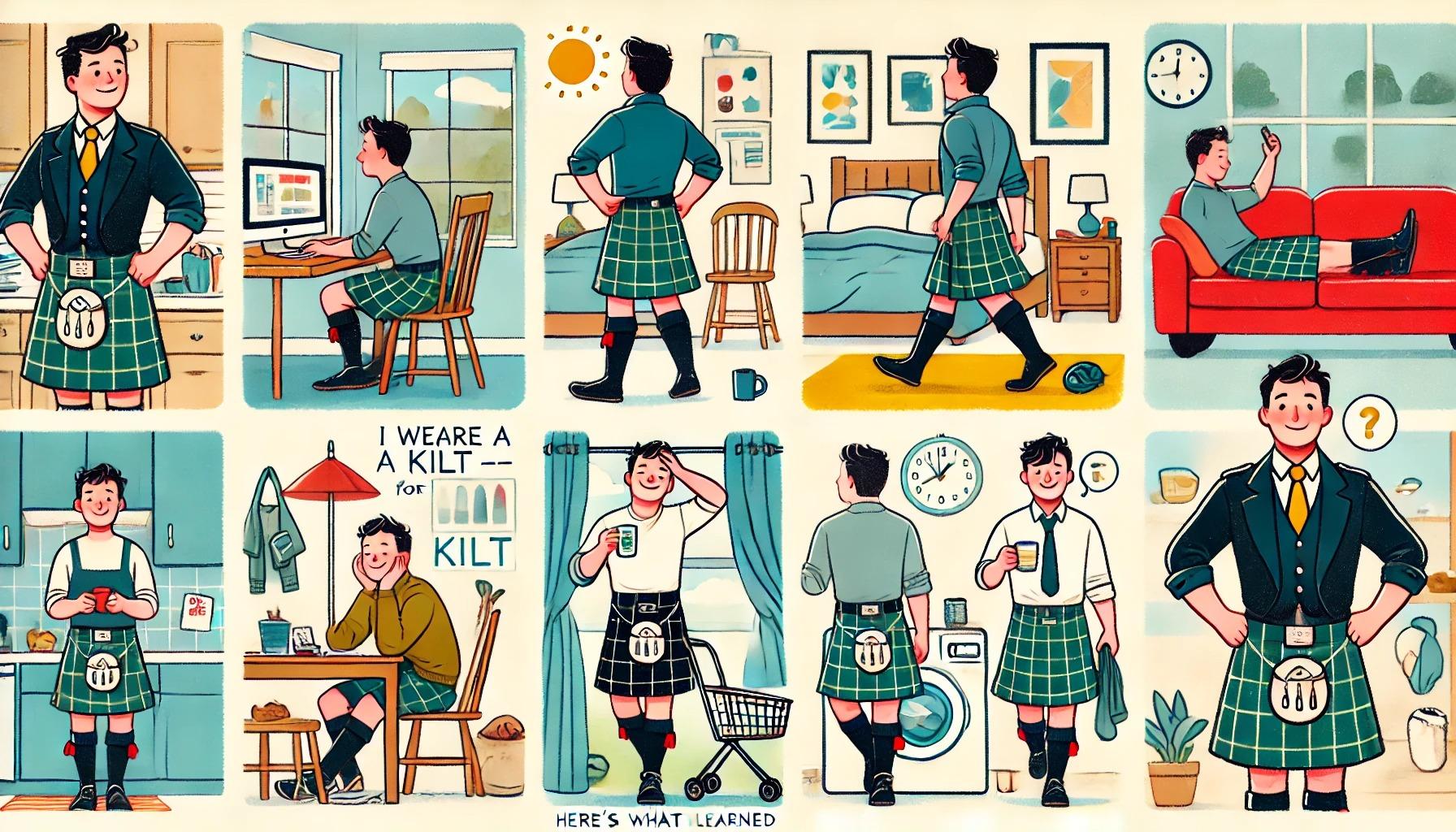Wearing a kilt every day for a week wasn’t just a wardrobe experiment—it was a deep dive into comfort, confidence, cultural connection, and the surprising reactions of the world around me. From awkward glances to unexpected compliments, here’s what a week in pleats taught me.
1. Day One: Breaking the Ice (and My Comfort Zone)
The first day was all about stepping outside my comfort zone. I wore a casual utility-style kilt with a plain tee and boots, just to run errands. And still—I felt seen. Not stared at, but noticed. I had to fight the urge to explain myself to everyone I passed.
But by the end of the day? I realized something big:
Most people either loved it or didn’t care. The only person making it weird was me.
2. Day Two: The Freedom Factor Is Real
Let me say this plainly: kilts are wildly comfortable.
-
There’s airflow.
-
There’s flexibility.
-
There’s no waistband digging into your stomach when you sit down.
By Day Two, I was already wondering: Why did I wait this long to try this?
I paired my kilt with a lightweight sweater and sneakers—practical, cozy, and surprisingly stylish.
3. Day Three: Conversations I Didn’t Expect
This was the day I started getting comments—and not the ones I expected.
-
“That’s a great look. Is it traditional?”
-
“Is that for an event?”
-
“You wear that with a lot of confidence.”
Every conversation turned into something deeper: heritage, identity, self-expression. I realized that kilts are conversation starters, not costumes. People were curious, not judgmental.
4. Day Four: Learning the Layers
I started experimenting with more traditional styling. I wore a wool tartan kilt with:
-
Kilt hose and flashes
-
A button-down shirt
-
A tweed vest
What I learned: layering is key. Kilts work across temperatures and weather—especially when paired with the right accessories. Also, wearing a sporran adds both form and function (wallet + phone + keys = sorted).
5. Day Five: Confidence Isn’t Optional—It’s Built In
By Day Five, I wasn’t thinking about the kilt anymore—I was just wearing it. And honestly? I felt more confident than I had in a long time.
There’s something about the way a kilt moves when you walk that makes you feel:
-
Strong
-
Grounded
-
Intentional
I didn’t expect that. I wasn’t just wearing clothes—I was inhabiting a mindset.
6. Day Six: The Social Test
That night, I wore the kilt out to dinner with friends. This was my “test” moment—how would it feel in a more public, social setting?
Result: total hit.
-
Friends were impressed.
-
Strangers were complimentary.
-
I got more questions about kilts than I’ve ever had in my life.
Most importantly, I realized: the kilt had become a part of how I expressed myself, not a novelty for the week.
7. Day Seven: Reflection and Ritual
For my final day, I wore my most traditional kilt—the tartan of my great-grandfather’s clan. I lit a candle, played bagpipe music, and reflected on what the week had meant.
I’d started this as an experiment. I ended it with a deeper appreciation for:
-
The craftsmanship of the kilt
-
The culture it represents
-
The confidence it unlocks
It was no longer just an outfit. It had become a ritual, a moment of connection—between past, present, and personal growth.
What I Learned:
✅ Kilts are practical.
Comfortable, flexible, and adaptable to all sorts of weather.
✅ Kilts spark connection.
People are curious, supportive, and often inspired to share their own stories.
✅ Kilts build confidence.
There’s power in standing tall, embracing tradition, and wearing something with meaning.
✅ Kilts aren’t just for Scots.
They’re for anyone who wants to express identity, celebrate heritage, or just try something bold with respect and intention.
Will I Keep Wearing One?
Absolutely. Not every day, maybe—but more than I used to. The kilt made me feel like myself, just a little more open, rooted, and unapologetic.
A week in a kilt didn’t just change how I dress—it changed how I carry myself.

